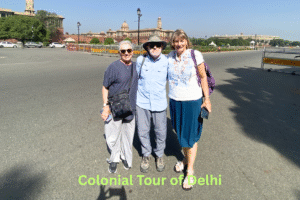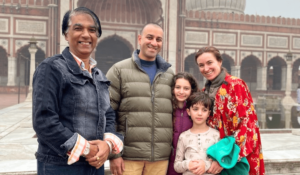Introduction – Why a Qutub Minar Tour Guide is a Must
When you land in Delhi, the first question that comes to mind is: what is the one monument I cannot miss? For most travelers, the answer is Qutub Minar. Rising 73 meters high, it is not only the tallest brick minaret in the world but also a UNESCO World Heritage Site that tells the story of Delhi’s beginnings.
But here’s the secret: walking through the Qutub Complex without a Qutub Minar Tour Guide means missing 80% of its magic. The carvings, inscriptions, ruins, tombs, and legends only come alive when explained by someone who knows the site inside out. This blog is your complete guide – from entry fee, timings, and monuments to nearby attractions, tips, and experiences – everything you need for the perfect visit.

Why Choose a Qutub Minar Tour Guide?
Exploring Qutub Minar is not just about admiring a tall tower. It’s about understanding the stories of rulers, dynasties, artisans, and architects who shaped Delhi centuries ago. A Qutub Minar private tour with guide allows you to unlock the hidden meanings behind the inscriptions, recognize the blend of Islamic and Hindu architecture, and discover fascinating anecdotes that you would otherwise miss.
With a professional guide, your visit transforms from just sightseeing into a journey through time—where the stones speak and history comes alive.
Delhi Tour Guide – Your Best Tour Companion in Delhi
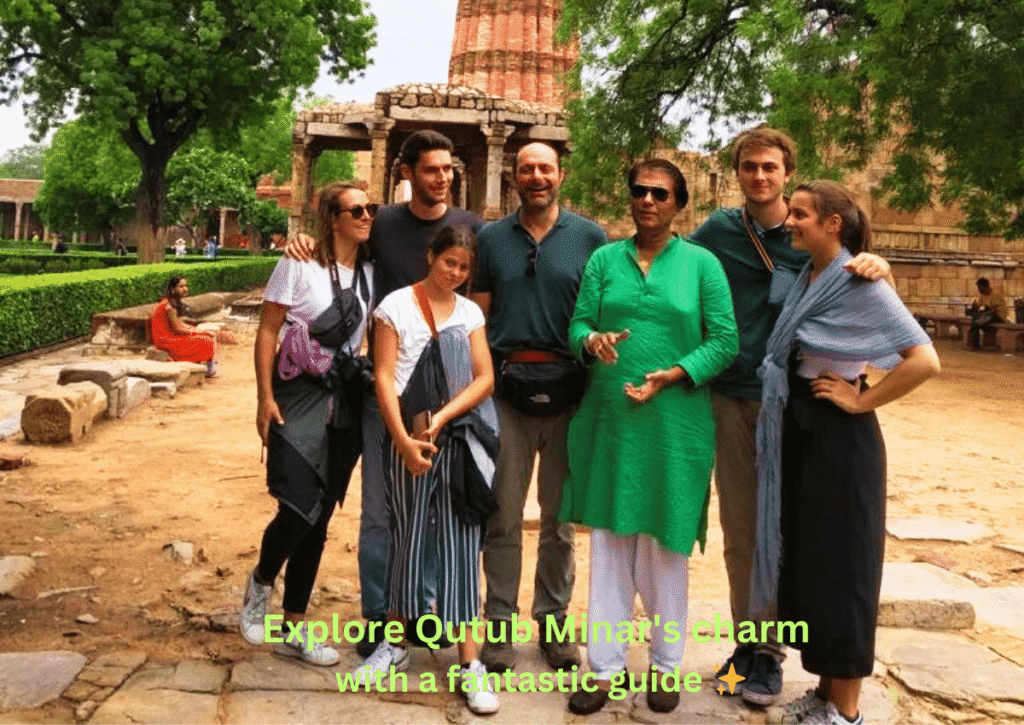
History of Qutub Minar – Delhi’s Tower of Victory
Built in 1193 by Qutb-ud-din Aibak, the first Sultan of Delhi, Qutub Minar was a symbol of power and the dawn of the Delhi Sultanate. Later, his successors like Iltutmish and Firoz Shah Tughlaq added more storeys.
Your Qutub Minar tour guide will explain how this minaret was not only a victory tower but also used for the muezzin’s call to prayer at the adjoining mosque. Over 900 years old, it has survived lightning strikes, earthquakes, and restoration works – yet still stands tall as Delhi’s pride.
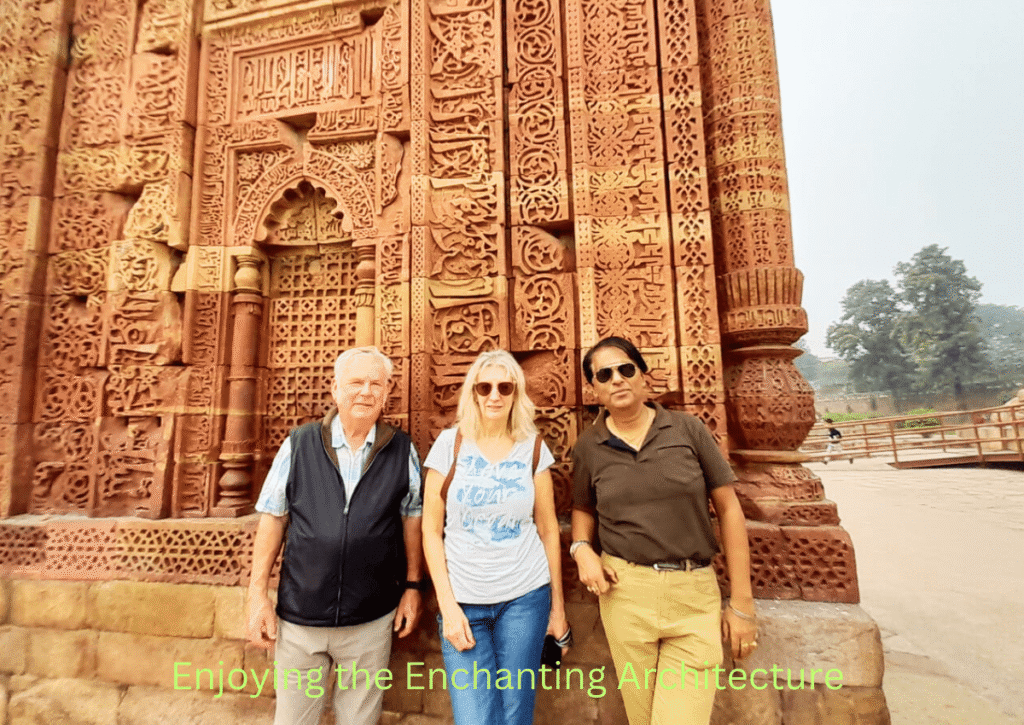
Qutub Minar Entry Fee and Timings
Qutub Minar Entry Fee and Timings (FAQ Answered)
- Entry Fee:
- Indians: ₹35
- Foreign Tourists: ₹550
- Children below 15: Free
- Timings: Daily from 7:00 AM – 9:00 PM
- Best Time to Visit: Early morning for photography, or evening for the Qutub Minar light show.
👉 Nearest Metro Station: Qutub Minar Metro Station (Yellow Line), just 2 km away.
Qutub Minar Ticket Booking: Tickets are available on-site and online via the ASI (Archaeological Survey of India) website. Booking online can save you time.
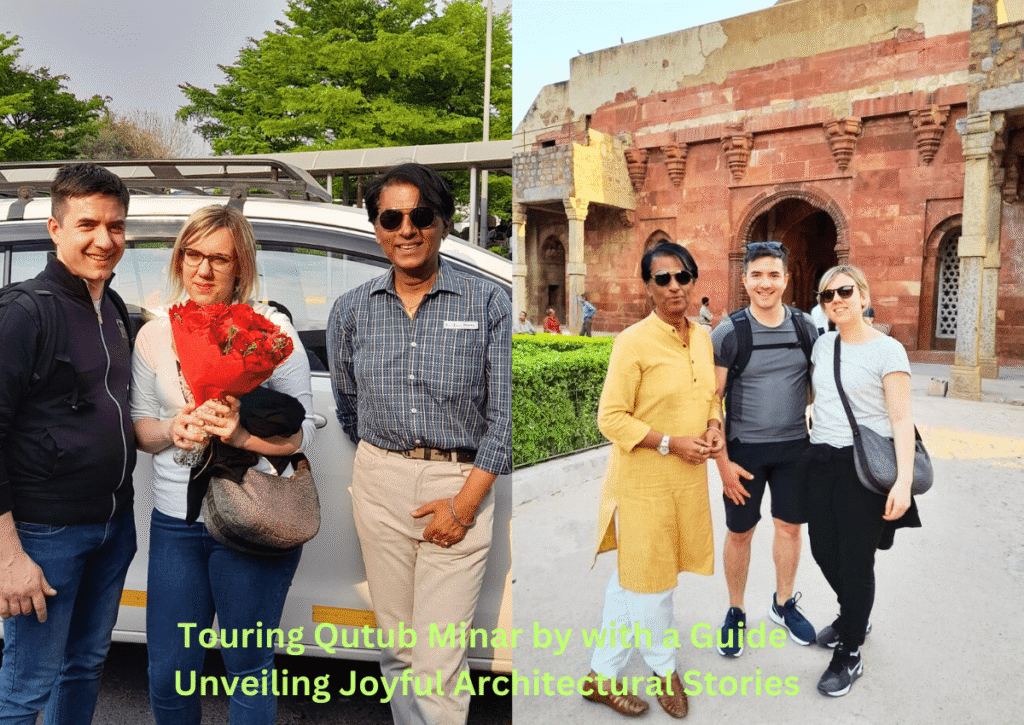
A Walk Through the Qutub Complex – Attractions Inside
When you book a Qutub Minar private tour with guide, you are not just seeing the minaret; you are entering an entire complex filled with extraordinary monuments. Let’s explore:
1. Qutub Minar – Explained by a Qutub Minar Tour Guide
The star attraction, the towering minaret, is where your journey begins. With a Qutub Minar Tour Guide, you’ll not only admire its sheer height but also understand the stories behind its calligraphy, floral motifs, and unique Indo-Islamic architecture. Though entry inside the tower has been closed since 1981, standing at its base with your guide’s narration makes you feel the grandeur of Delhi’s medieval past.
2. Quwwat-ul-Islam Mosque – Insights from a Qutub Minar Tour Guide
Located right next to Qutub Minar, this is Delhi’s first mosque, built by Qutb-ud-din Aibak. Remarkably, it was constructed using materials from 27 dismantled Hindu and Jain temples. A Qutub Minar Tour Guide will point out the intricately carved pillars, where temple motifs like lotus and bells still remain—showing the fascinating cultural blend of the 12th century.
3. The Iron Pillar – Stories with a Qutub Minar Tour Guide
One of the most mysterious artifacts in the complex, the Iron Pillar of Delhi stands 7 meters tall and has resisted rust for more than 1,600 years. Believed to have been erected during the Gupta Empire, it showcases the advanced metallurgical skills of ancient India. Your Qutub Minar Tour Guide will share legends associated with the pillar, including the popular belief that encircling it with your arms (now restricted) once granted wishes.
4. Alai Darwaza – Architectural Wonders with a Qutub Minar Tour Guide
Built by Alauddin Khilji in 1311, this is the main gateway to the mosque. The Alai Darwaza is a fine example of Indo-Islamic architecture, with red sandstone walls, white marble inlay, and intricate lattice work. With a Qutub Minar Tour Guide, you’ll discover how this gateway marked a turning point in Indian architecture with its true arches and artistic finesse.
5. Alai Minar – Discovering Ambition with a Qutub Minar Tour Guide
Alauddin Khilji had grand ambitions to build a tower twice the size of Qutub Minar, but construction stopped after his death. What remains today is the massive unfinished Alai Minar. Standing here with your Qutub Minar Tour Guide, you can imagine what could have been the tallest minaret in the world, and hear stories about the Sultan’s grand but incomplete vision.
6. Tomb of Iltutmish – Guided by a Qutub Minar Tour Guide
Another gem within the Qutub Complex is the tomb of Shams-ud-din Iltutmish, the second ruler of the Delhi Sultanate. Built in 1235, the tomb is richly decorated with intricate stone carvings, Quranic verses, and geometric patterns. A Qutub Minar Tour Guide helps you appreciate the details you might otherwise overlook, making this tomb not just a structure, but a masterpiece of early Indo-Islamic design.
Qutub Minar Private Tour with Guide – What to Expect
When you hire a Qutub Minar tour guide, your journey becomes immersive and personal:
- Storytelling: Hear the legends of kings, architects, and the mysteries surrounding the Iron Pillar.
- Hidden Corners: A guide will take you to less crowded spots for photography and quiet reflection.
- Cultural Insights: Learn about the Indo-Islamic architectural fusion, which set the tone for monuments like Humayun’s Tomb and Taj Mahal.
- Flexible Pace: A private tour means you can explore at your own comfort—whether you love taking pictures, sketching, or simply absorbing the atmosphere.
Many Delhi tour packages combine Qutub Minar with other attractions like Humayun’s Tomb, Lotus Temple, and India Gate. But for a deep dive, dedicating at least 2 hours inside the Qutub Complex with a guide is highly recommended.
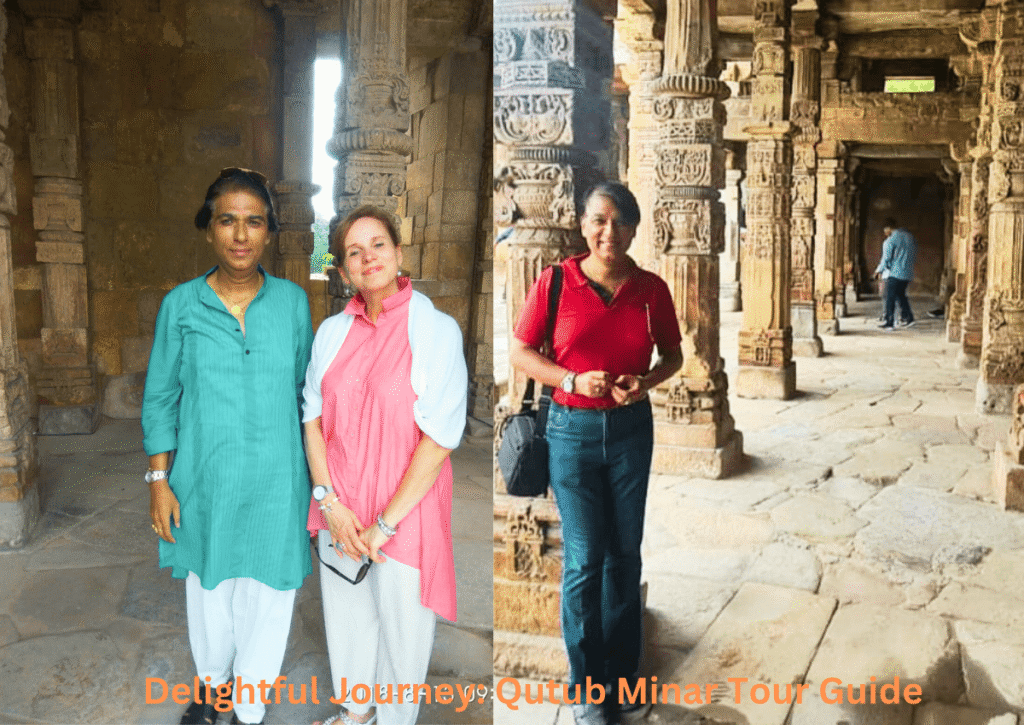
Photography Tips for Qutub Minar
- Visit in the golden hour (early morning or late afternoon) when the sunlight highlights the red sandstone beautifully.
- Try wide-angle shots to capture the full height of the tower.
- The lawns around the minaret provide great framing opportunities.
- Don’t miss detailed close-ups of calligraphy and carvings.
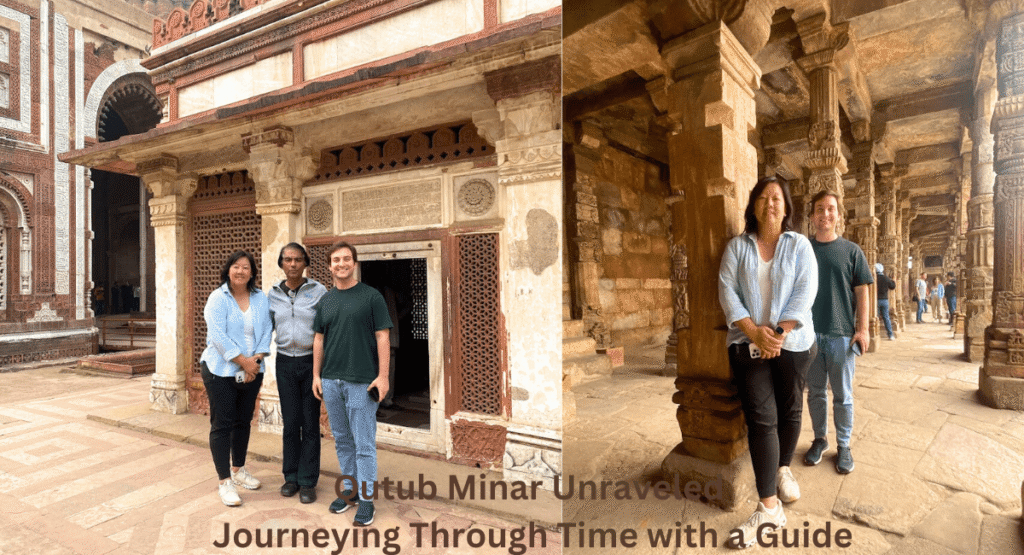
How to Reach Qutub Minar
- By Metro: The nearest station is Qutub Minar Metro Station on the Yellow Line. From there, it’s a short auto or e-rickshaw ride.
- By Car/Taxi: Qutub Minar is well-connected by road, about 13 km from Connaught Place and 12 km from Indira Gandhi International Airport.
- By Bus: DTC buses and private buses frequently stop near the Qutub Complex.
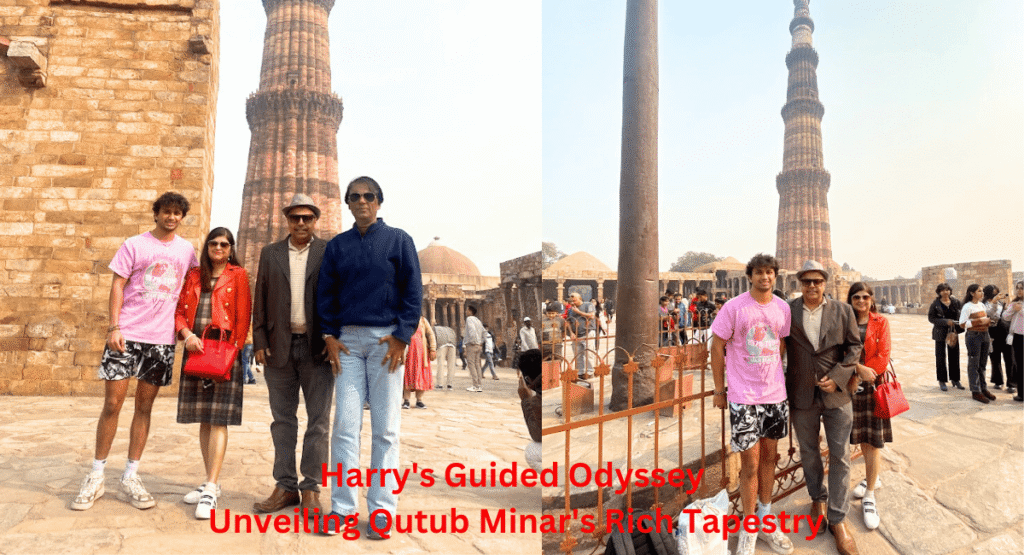
Insider Tips from a Qutub Minar Tour Guide
- Arrive early to beat the crowds and enjoy peaceful moments.
- Carry a water bottle and cap, especially in summer.
- Wear comfortable shoes since the complex requires walking.
- Hire a licensed guide for authentic information.
- Combine your visit with Mehrauli Archaeological Park nearby for a full-day heritage experience.
Beyond Qutub Minar – Nearby Attractions
If you have time, a private guide can take you to nearby heritage gems such as:
Mehrauli Archaeological Park – A Hidden Treasure with Ruins, Stepwells, and Tombs
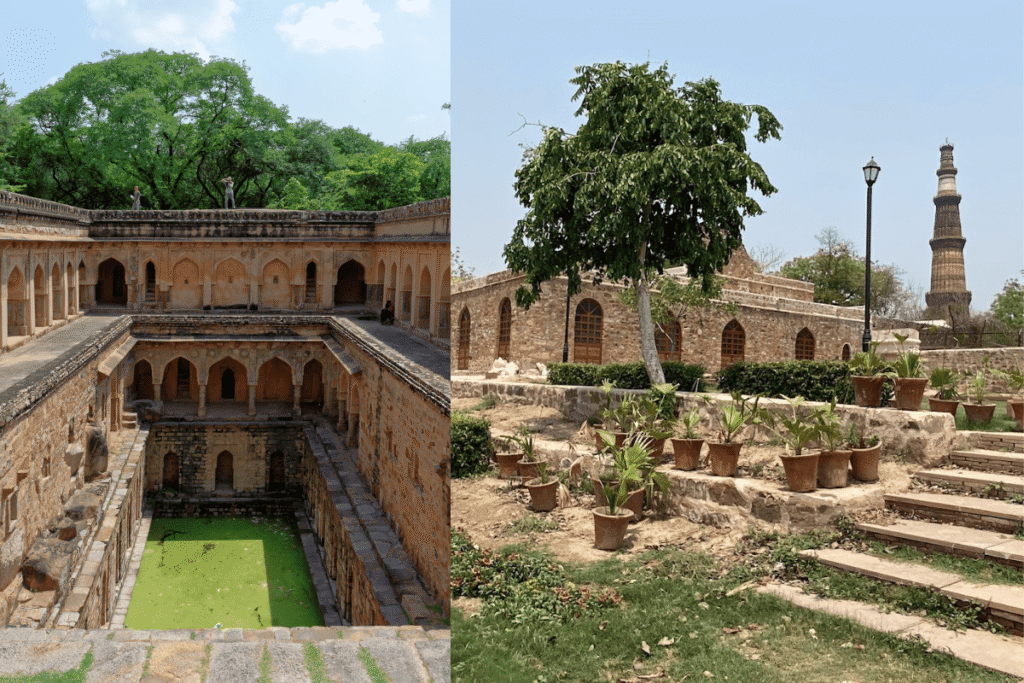
Just a short walk from Qutub Minar lies the fascinating Mehrauli Archaeological Park, a vast heritage site spread across 200 acres. With a Qutub Minar Tour Guide, you can explore centuries of history woven into its crumbling ruins, mystical stepwells, Mughal gardens, and forgotten tombs. From the majestic Rajon ki Baoli to the tranquil Jamali Kamali Mosque, every corner whispers stories of Delhi’s layered past—making it a must-visit for travelers who want to go beyond the main monument and dive deeper into the city’s heritage.
Hauz Khas Village – Perfect for Food, Shopping, and Nightlife after Your Heritage Walk
After exploring the monuments with your Qutub Minar Tour Guide, head to the vibrant Hauz Khas Village, where history meets modern charm. Centered around a 14th-century water tank and medieval ruins built by Alauddin Khilji, the area today is alive with quirky cafés, boutique shops, art galleries, and buzzing nightlife. It’s the perfect blend of heritage and contemporary culture, offering travelers a chance to relax, shop, and savor Delhi’s cosmopolitan spirit after a day of sightseeing.
Why Qutub Minar is a Must-Visit in Delhi
Qutub Minar is not just a monument; it is a symbol of Delhi’s history and resilience. From its awe-inspiring height to the legends carved in stone, it leaves visitors amazed. A Qutub Minar private tour with guide ensures that your experience is not just about sightseeing but also about connecting deeply with Delhi’s soul.
Whether you are a history lover, a photography enthusiast, or a traveler seeking culture, Qutub Minar has something special to offer.
Qutub Minar Sound & Light Show at Night with a Tour Guide
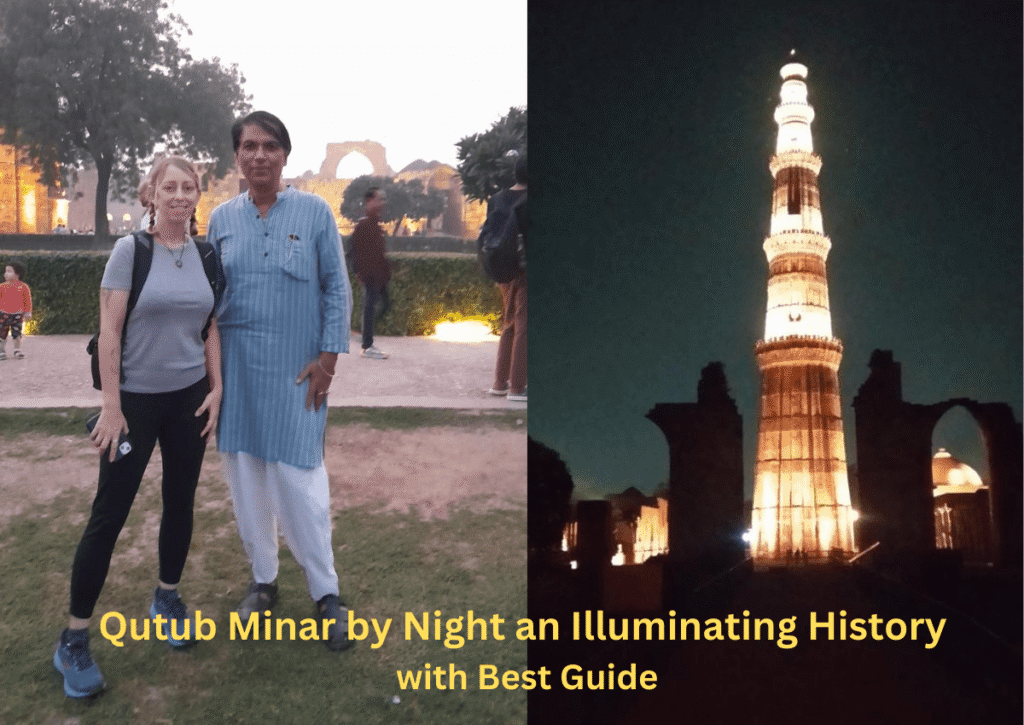
As the sun sets, Qutub Minar transforms into a breathtaking spectacle with its evening light and sound show. Illuminated in golden hues, the 800-year-old minaret tells the story of Delhi’s glorious past through narration, music, and lights. Experiencing this with a Qutub Minar tour guide makes it even more magical, as they explain the legends behind each ruler and monument while you enjoy the night view of this UNESCO World Heritage Site. A perfect way to end your Delhi sightseeing tour!
Qutub Minar at Night- Light & Sound Show
What Travelers Say About Our Qutub Minar Tour Guide
⭐⭐⭐⭐⭐
Emily, USA
“The Qutub Minar Tour Guide made history come alive! I never thought I’d enjoy architecture so much, but the stories behind each monument were unforgettable.”
⭐⭐⭐⭐⭐
James, Australia
“Amazing experience! The guide’s knowledge of Delhi’s heritage, especially Qutub Minar, was incredible. Highly recommend for anyone visiting the city.”
⭐⭐⭐⭐⭐
Sofia, Spain
“Walking through the Qutub Complex felt like stepping back in time. Thanks to our wonderful guide, every ruin and carving had meaning.”
⭐⭐⭐⭐⭐
Oliver, UK
“One of the best tours I’ve had in India. The guide explained the history beautifully and made the visit to Qutub Minar truly memorable.”
⭐⭐⭐⭐⭐
Amira, UAE
“I loved how the tour blended history with legends. The Qutub Minar looked majestic, and our guide made the whole visit special.”
Read More: Delhi Tour Guide Reviews on Google
Conclusion
Exploring Delhi without visiting Qutub Minar is like reading a book with the first chapter missing. This monument is where the story of Delhi Sultanate begins and where the city’s Indo-Islamic architecture flourished. With this Qutub Minar Tour Guide, you now have all the practical tips, historical context, and insider knowledge to make your visit unforgettable.
So, next time you plan your Delhi sightseeing, remember that Qutub Minar is not just a stop on your itinerary—it’s an experience best enjoyed with a passionate guide who can bring history alive.


